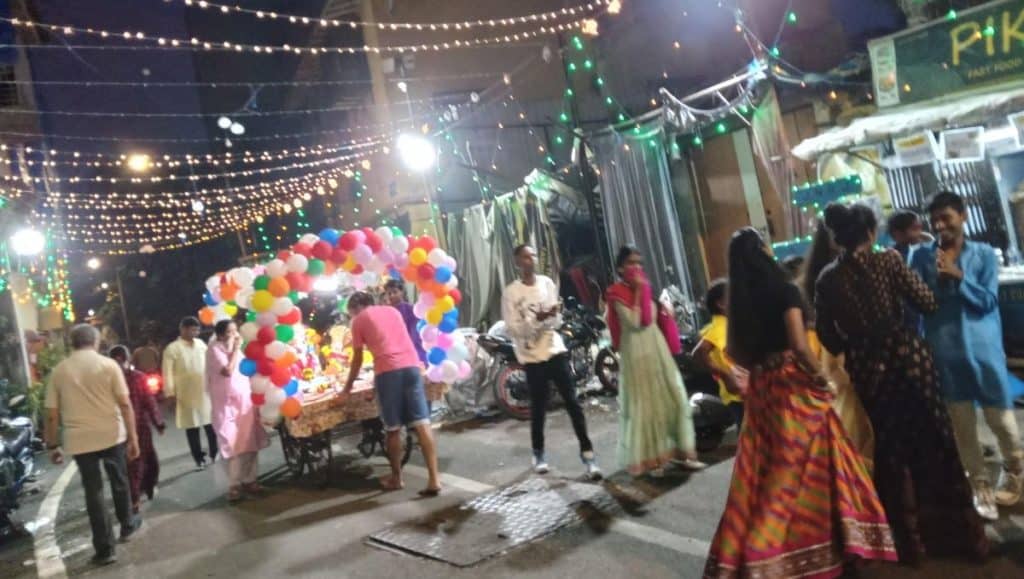Last Updated on October 25, 2024 by Ellen
Drums, dancing, balloons, lights, fireworks, parades, a big pink elephant guy — now a woman with ten arms!
It sounds bizarre, but it’s just Hindu festival time. And here in India, we are enjoying and marveling at all of it.
In fact, thus far, probably the most outwardly visible sign (except for the colorful saris and millions of tuktuks) that we are indeed in the country of India, has been the continuing displays of religious celebration — Hindu and other.
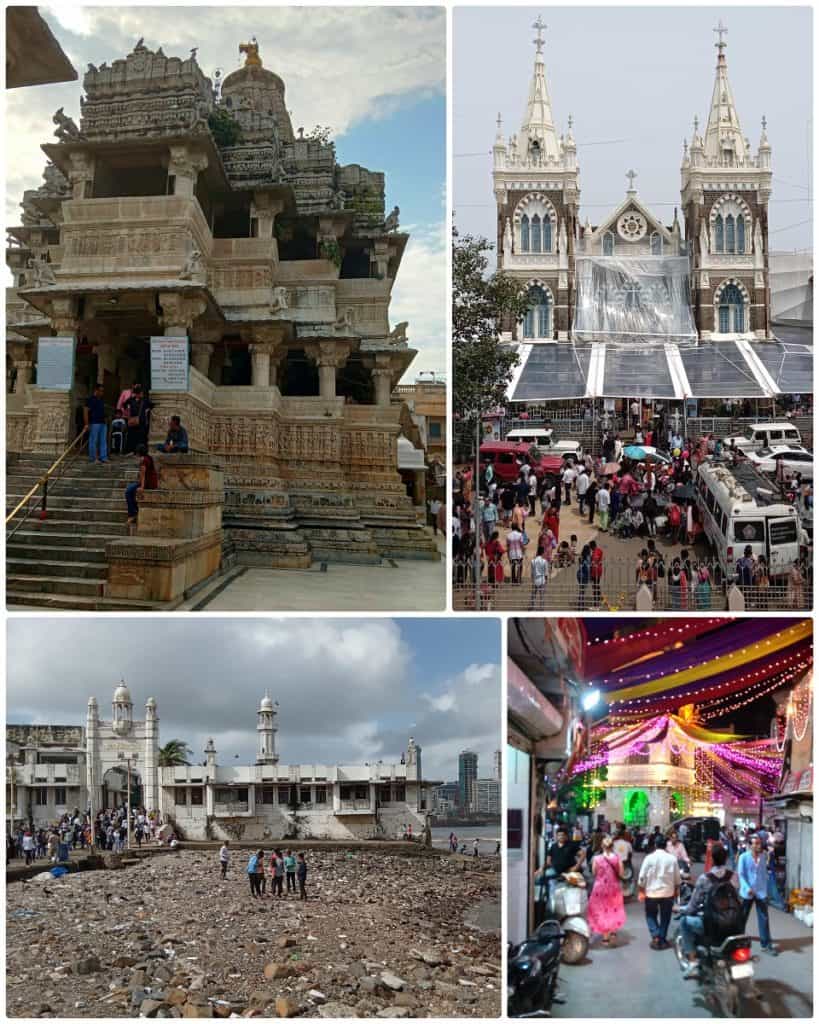
Even as I write this, I can plainly hear the frenetic beating of dhak (drums) that signal a nearby Hindu puja. (Puja is a worship ritual performed by Hindus, Buddhists and Jains to offer devotional homage and prayer to one or more deities.)
Last night was the finalé of a nine-day homage to the Hindu Goddess Durga, a symbol of female strength, protection, and motherhood.
Westerners might recognize the beautifully decorated Durga idols as having 10 (or more) arms to protect devotees from ‘all directions’.
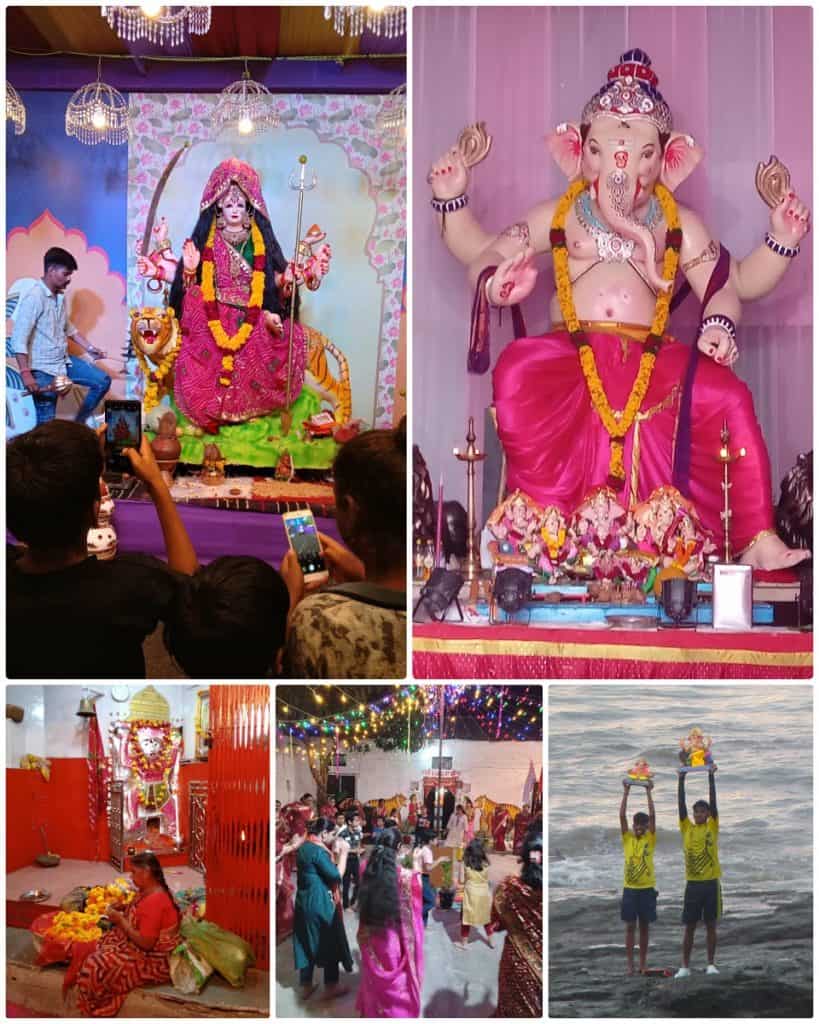
A previous 11-day festival, occurring in Mumbai when we arrived a month ago, was for one of Durga’s four God/Goddess children – Lord Ganesha, the God of wisdom and prosperity.
Ganesh is most recognizable as the Hindu God with an elephant head on a human body. The backstory of the elephant head is here, on another site.
On the final day of the Ganesh fest – called Ganesh Chaturthi – we watched as Ganesha statues large and small were submerged into the sea/water by devotees; a ritual to mark the end of the annual ‘birth cycle’.
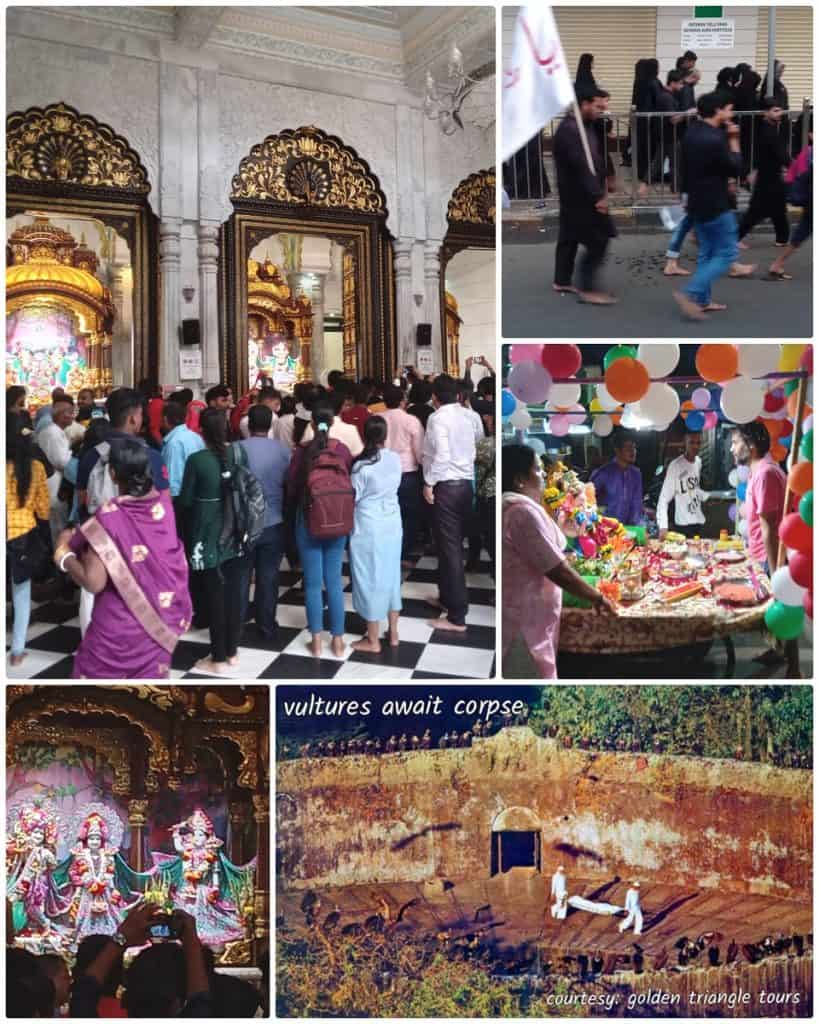
In addition, we’ve already been schooled in the beliefs of the Hare Krishna sect, seen hoards of barefoot pilgrims, visited numerous shrines and temples, even observed where those of the Zoroastrian (Parsi) faith offer bodies of their deceased to the vultures! (Pic above)
These customs and more are often ‘in your face’ in India. And while the traditions and tales may seem odd to us, they are no more strange than our own religious practices.
As a Roman Catholic, I worship statues of Christ on the cross and countless angels and saints. Such is undoubtedly just as weird to Hindus.
In fact, here in India, I’ve participated in the holy masses and extended celebrations of the Nativity of Mary amidst huge throngs of Indian Catholics.
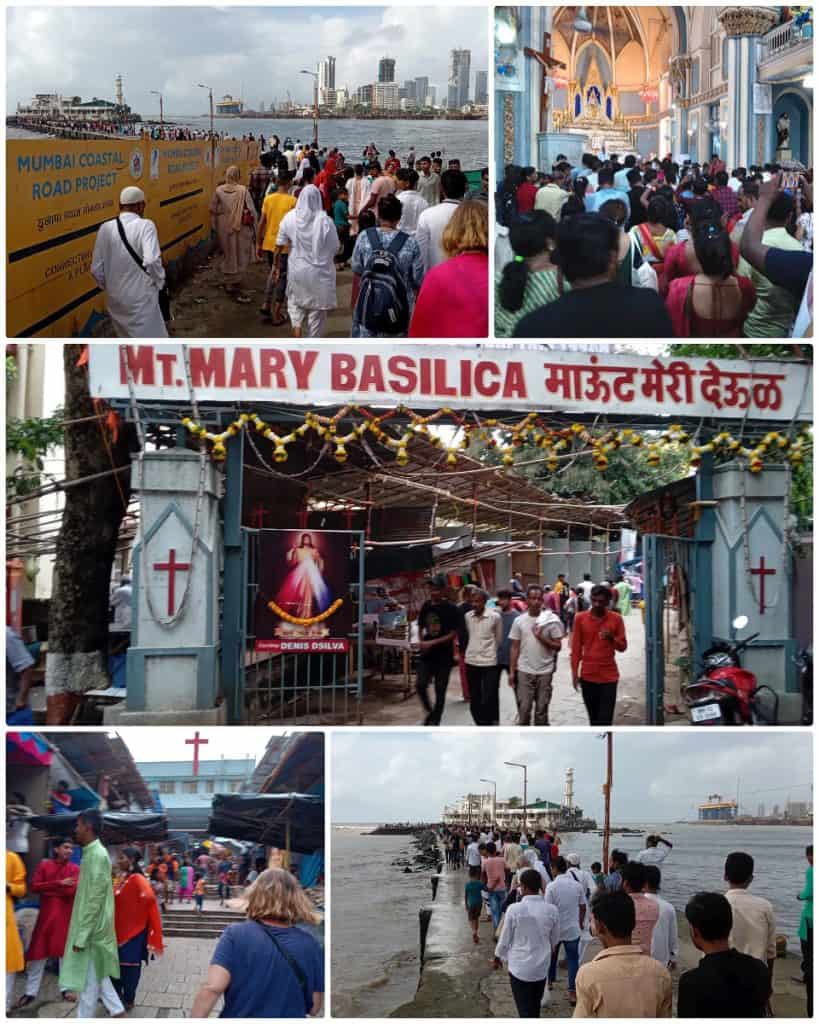
Meanwhile, at this moment, mixed with the Hindu drums, I can also hear the evening Muslim prayer call from a nearby mosque. An estimated 15% of Indians identify as Muslim.
In Mumbai, we visited the incredible Haji Ali Dargah floating mosque, dating to the 15th century – and swarmed with thousands of Indian pilgrims.
Of course, there are other faiths here too. With a population approaching 1.5 billion, all religious persuasions are represented in large numbers.
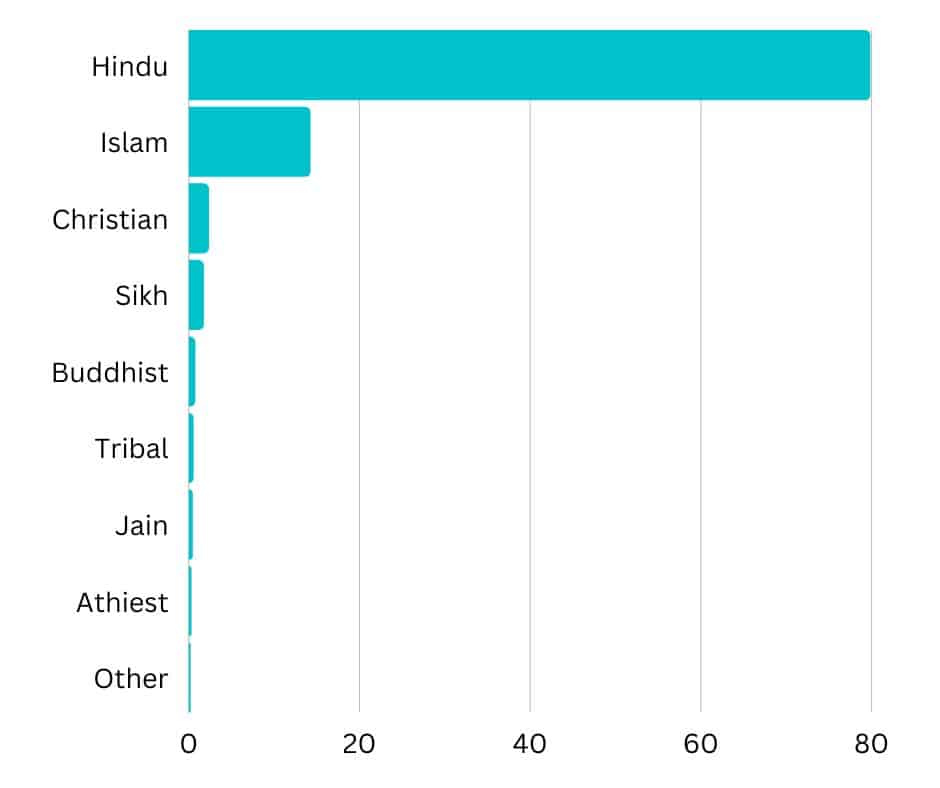
As slow-travel visitors to India, we look forward to witnessing the customs of every denomination and sect in the months ahead. And Hindu ‘festival season’ is upon us – guaranteeing a lively time
From funeral and birthing rituals, to religious clothing, body mods, markings and decorations, prayers, chants, songs, music, dance, celebration, explosions – even silence and meditation; it’s all here in India for us to witness and learn.
The way we see it, this is what mankind needs most: acceptance and understanding of all creeds which promote peace and love and respect during this time of worldwide strife. Namaste.
As always, be thankful and generous, happy trails & more beer.
Life is NOW!
Thanks for reading, “Travel notes: religions in India.”
Other posts you might like:

